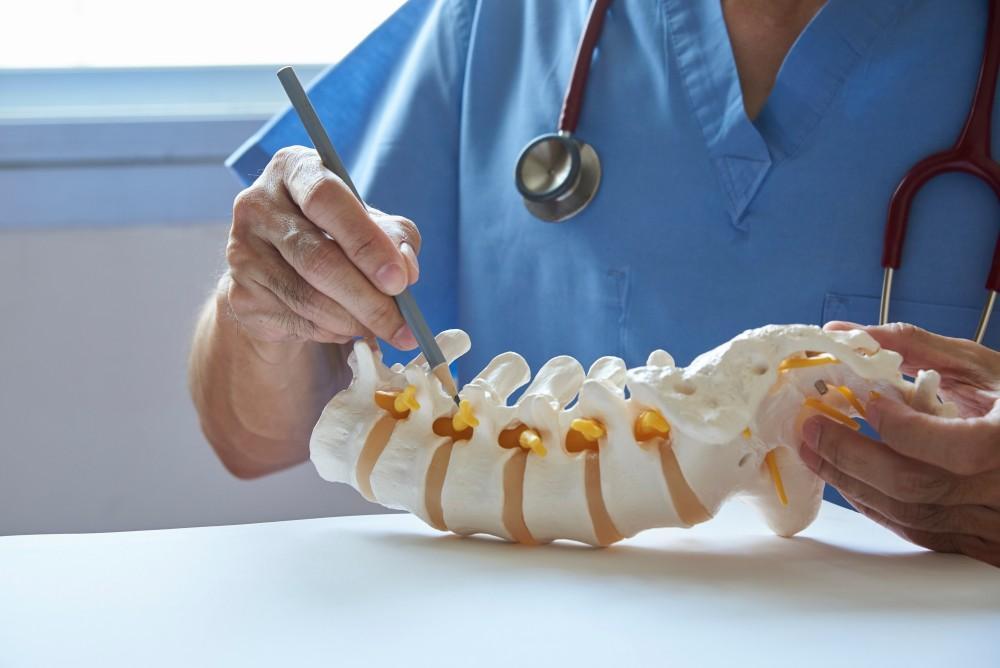
Will Spinal Stenosis Ever Get Better on Its Own?

Your spine is an amazing structure. It comprises 24 interlocking bony vertebrae, each separated by an intervertebral disc. The disc cushions the spine and allows you to bend and twist. The combination forms a hollow tube that runs the spinal cord and other associated nerves that exit the canal through foramina (holes in the vertebrae), destined for the peripheral parts of the body.
Spinal stenosis is a condition where areas of the spinal structure narrow, reducing the amount of space for the nerves. Depending on the location of the narrowing and how much it reduces the epidural space, the spinal nerve roots in that region may become impinged (“pinched”), leading to radiating pain, numbness and/or weakness, and tingling.
Sciatica is a prime example of such an impingement. The sciatic nerve exits the spine between the L4-L5 and/or L5-S1 vertebrae in the lower back. If stenosis narrows the epidural space or the foramina, the nerve’s root becomes impinged, and the pain travels along the entire nerve’s route, radiating into the buttocks and down the outside of the leg.
Board-certified neurosurgeon Dr. Kamal R. Woods at Vertrae® notes that up to 95% of men and women suffer some degeneration in their spines by the time they reach age 50, which can lead to spinal stenosis and resulting nerve compression. Many patients want to know if the stenosis will get better on its own. The short answer is no. Here’s why.
The two main types of spinal stenosis
Stenosis comes in two types:
1. Foraminal stenosis (lateral stenosis)
Some spinal nerves exit the canal through foramina. If a foramen narrows, it means there’s less space for the nerve to pass through. As a result, the nerve may become pinched, painful, or dysfunctional.
2. Central canal stenosis
The central canal is the hollow tube that houses and protects the spinal cord down the length of the spine. When this tube narrows, it’s called central canal stenosis. If it occurs in the cervical or thoracic spine, the spinal cord can become bruised, leading to pain or dysfunction anywhere in the body below the compression level. When the narrowing occurs in the lumbar spine, you develop pain with standing and walking. For many people, the pain isn’t as bad when sitting.
Will spinal stenosis get better on its own?
Though we wish it were otherwise, spinal stenosis only gets worse over time. However, any of a number of treatments can help you manage the symptoms and lead a full life.
Dr. Woods always starts with conservative treatments that help you manage the pain and keep you as active as possible. One of the most effective therapies is physical therapy, where you learn stretches and exercises that strengthen your back muscles and relieve pain. They also use hot and cold therapy to help manage pain during flare-ups.
Another approach is a variation of talk therapy called cognitive behavioral therapy (CBT). CBT gives you more insight into your pain and how you respond to it, allowing you to make better choices about how to manage your condition.
Epidural spinal injections (ESIs) may also help. Dr. Woods injects a quick-acting anesthetic and a longer-acting steroid directly into the space around your spinal cord. The anesthetic numbs the pain, and the steroid is a potent anti-inflammatory, reducing pain.
If conservative treatments don’t help, or if you lose movement or feeling, surgery may become necessary. There are many different procedures, but all have the same goal: to relieve pressure on the nerve or nerve root that’s producing pain.
Surgery can involve removing a bulging or herniated disc, removing part of a vertebra, or widening the spinal canal and foramina where your spinal nerves are located.
Two common procedures at Vertrae® include:
Laminectomy
A laminectomy is the most common surgical procedure for spinal stenosis. In a minimally invasive surgery, Dr. Woods makes a small incision in your back and uses it to remove any bony growths (spurs) and/or thickened ligaments that impinged the nerve and create enough space for the nerve to function normally.
Foraminotomy
Dr. Woods expands the size of the foramina in the vertebrae where the affected nerve roots exit.
If you’re struggling with back or neck pain that radiates into an extremity, chances are good you have some form of spinal stenosis. To get an accurate diagnosis and effective treatment, contact Vertrae® to schedule a consultation with Dr. Woods. Call either our Dayton or Springfield, Ohio, location at 844-255-2225 or book online with us today.
You Might Also Enjoy...


5 Common Signs of a Compression Fracture

Using Your Own Platelet-Rich Plasma to Alleviate Your Back Pain

A Closer Look at Your Sacroiliac Joint

4 Benefits of Outpatient Spine Surgery

